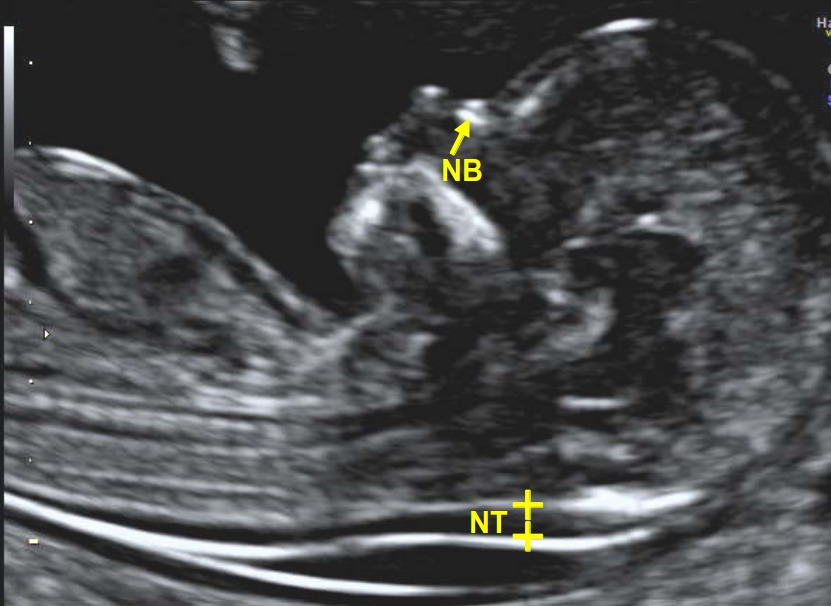NT + NB scan (Nuchal transluceny & Nasal Bone scan)
The NT + NB scan (Nuchal transluceny & Nasal Bone scan) is an ultrasound done in the first trimester to determine your baby’s risk of having Down syndrome and some other chromosomal abnormalities. It’s usually done along with a blood test. If the nuchal translucency test indicates that your baby may have a health condition, you can decide whether to have a diagnostic test to find out for certain.
What is the nuchal translucency test?
The nuchal translucency test uses ultrasound to assess your developing baby’s risk of having Down syndrome (DS) and some other chromosomal abnormalities, as well as major congenital heart problems. It’s offered to all pregnant women, along with a blood test, in first-trimester combined screening options.
The NT scan measures the clear (translucent) space in the tissue at the back of your baby’s neck. (This is the “nuchal translucency.”) Babies with abnormalities tend to accumulate more fluid at the back of their neck during the first trimester, causing this clear space to be larger than average.
The NT scan must be done when you’re between 11 and 14 weeks pregnant, because this is when the base of your baby’s neck is still transparent. (The last day you can have it is the day you turn 13 weeks and 6 days pregnant.)
Some practitioners also look for the presence of the fetal nasal bone during the NT scan. If no nasal bone is seen in the developing baby, some experts believe this increases the likelihood of chromosomal abnormalities. In some very specialized testing centers, other major abnormalities may be detected during the scan.
The NT scan is not invasive, and it’s not conclusive. Diagnostic testing such as CVS or amniocentesis are necessary to confirm a positive screen result.
How is the nuchal translucency test done?
The sonographer first confirms your baby’s gestational age by measuring them from crown to rump to see whether they’re about the size they should be for their age. Then the sonographer positions the sensor, called the transducer, over your abdomen so that your baby’s nuchal translucency shows up on the monitor and measures the thickness of it on the screen with calipers.

How are NT scan results calculated?
Your baby’s chances of having a chromosomal abnormality are determined by the nuchal translucency measurement, your age, your baby’s gestational age, and the blood test results.
Your age is factored in because although anyone can have a baby with a chromosomal abnormality, the risk increases as you age. For example, your likelihood of carrying a baby with Down syndrome ranges from approximately 1 in 1,200 at age 25 to 1 in 100 at age 40.